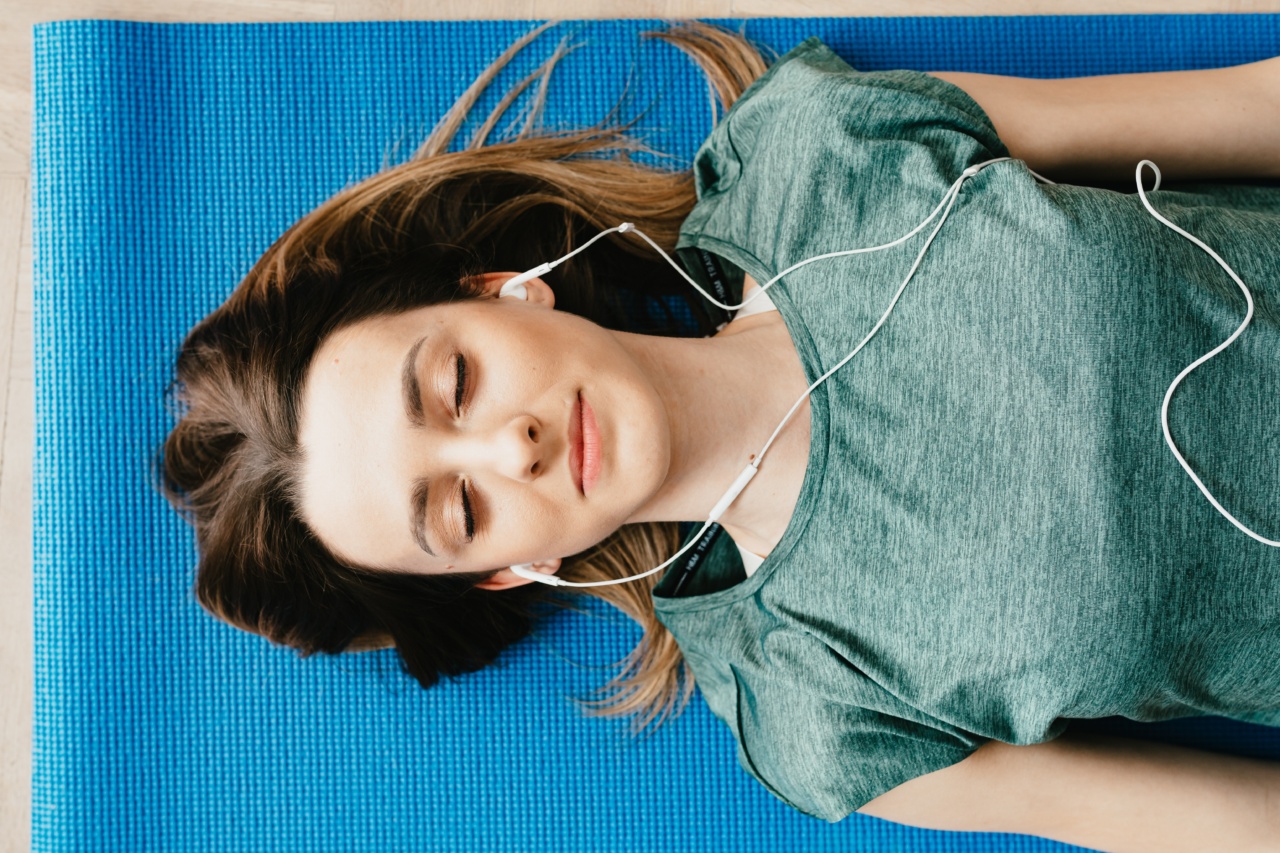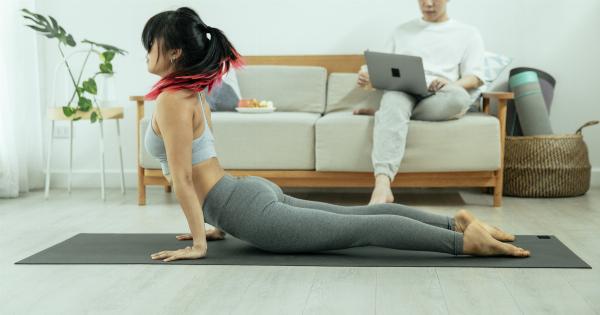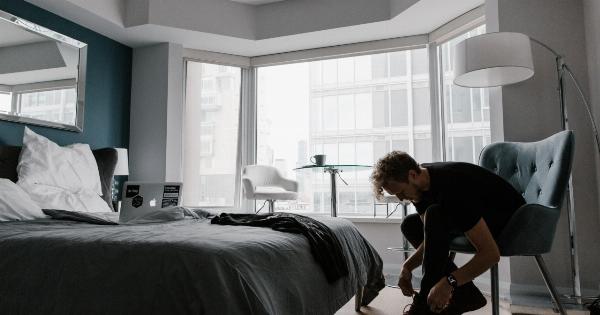Yoga is a powerful practice that has been used for millennia to cultivate physical and mental well-being. It combines physical postures, breathing techniques, and meditation to help balance the body and calm the mind.
If you struggle with fatigue in the mornings or have trouble falling asleep at night, incorporating yoga into your daily routine can help you feel more energized and improve your sleep quality. Here are ten yoga poses that can help:.
1. Sun Salutations (Surya Namaskar)
Sun salutations are a series of yoga poses that are traditionally practiced in the morning to awaken the body and mind. They can help increase circulation, lengthen and strengthen the muscles, and improve mental focus.
To practice sun salutations, stand at the front of your mat with your hands together at your heart. Inhale and lift your arms overhead, then exhale and fold forward, bringing your hands to the mat.
Inhale and lift your head halfway, then exhale and step back into plank pose. Lower down to the floor, then inhale and lift your chest with cobra pose. Exhale and lift back into downward-facing dog, then step forward and repeat the sequence on the other side.
2. Cat-Cow (Marjariasana-Bitilasana)
Cat-cow is a gentle stretching exercise that can help wake up the spine and relieve tension in the neck and shoulders. It can also help improve digestion and boost energy levels.
To practice cat-cow, come onto your hands and knees with your wrists directly under your shoulders and your knees directly under your hips. Inhale and arch your back, lifting your head and tailbone toward the ceiling (cow pose).
Exhale and round your spine, tucking your chin to your chest and pulling your belly button toward your spine (cat pose). Repeat for several breaths.
3. Downward-Facing Dog (Adho Mukha Svanasana)
Downward-facing dog is a staple yoga pose that can help stretch the hamstrings, calves, and spine while also stimulating circulation and energizing the body. It can also help calm the mind and ease anxiety.
To practice downward-facing dog, start on your hands and knees with your wrists directly under your shoulders and your knees directly under your hips.
Curl your toes under and lift your hips up and back, straightening your legs and pressing your palms and fingers into the mat. Keep your head and neck relaxed and breathe deeply as you hold the pose for several breaths.
4. Warrior II (Virabhadrasana II)
Warrior II is a standing pose that can help build strength and stamina in the legs, hips, and core muscles while also improving focus and mental clarity. It can also help improve posture and balance.
To practice warrior II, start in a standing position with your feet about hip-width apart. Step your left foot back about 3-4 feet, turning your left foot out to a 90-degree angle.
Bend your right knee and rotate your hips so that they are facing forward, then extend your arms out to the sides at shoulder height. Keep your gaze focused over your front hand and breathe deeply as you hold the pose for several breaths. Repeat on the other side.
5. Tree Pose (Vrikshasana)
Tree pose is a balancing pose that can help improve focus and concentration while also strengthening the muscles in the legs, hips, and core. It can also help improve overall balance and stability.
To practice tree pose, stand with your feet together and your arms at your sides. Shift your weight onto your left foot and lift your right foot, placing the sole of your foot on your left inner thigh.
Place your hands together at your heart and focus on a spot in front of you. Breathe deeply as you hold the pose for several breaths, then release and repeat on the other side.
6. Reclining Bound Angle (Supta Baddha Konasana)
Reclining bound angle is a restorative pose that can help alleviate tension in the hips and lower back while also calming the mind and reducing stress. It can also help improve breathing and digestion.
To practice reclining bound angle, lie on your back with your knees bent and the soles of your feet together, allowing your knees to fall open to the sides. Place your arms at your sides with your palms facing up.
Close your eyes and focus on your breath as you hold the pose for several minutes.
7. Legs Up the Wall (Viparita Karani)
Legs up the wall is another restorative pose that can help reduce stress and fatigue while also improving circulation and lymphatic drainage. It can also help soothe menstrual cramps and relieve headaches.
To practice legs up the wall, lie on your back with your legs extended up the wall and your hips close to the wall. Allow your arms to rest at your sides with your palms facing up.
Close your eyes and focus on your breath as you hold the pose for several minutes.
8. Child’s Pose (Balasana)
Child’s pose is a gentle resting pose that can help release tension in the back, neck, and shoulders while also calming the mind and reducing stress. It can also help improve digestion and ease anxiety.
To practice child’s pose, come onto your hands and knees with your wrists directly under your shoulders and your knees directly under your hips.
Lower your hips back toward your heels and extend your arms forward, allowing your forehead to rest on the mat. Close your eyes and focus on your breath as you hold the pose for several breaths.
9. Corpse Pose (Savasana)
Corpse pose is the final relaxation pose that is typically practiced at the end of a yoga session. It can help reduce stress and tension while also promoting a sense of calm and relaxation. It can also help improve sleep quality.
To practice corpse pose, lie on your back with your arms at your sides and your legs extended. Close your eyes and focus on your breath as you allow your body to fully relax. Stay in the pose for several minutes.
10. Alternate Nostril Breathing (Nadi Shodhana)
Alternate nostril breathing is a simple breathing technique that can help balance the body’s energy and calm the mind. It can also help improve focus and concentration while reducing anxiety and stress.
To practice alternate nostril breathing, sit in a comfortable position with your spine straight and your eyes closed. Use your right hand to close your left nostril, then inhale deeply through your right nostril.
Close your right nostril with your thumb and exhale through your left nostril. Inhale through your left nostril, then close it with your ring finger and exhale through your right nostril. Continue alternating nostrils for several rounds.
Conclusion
Yoga is a powerful practice that can help energize your mornings and enhance your sleep quality.
The above ten yoga poses are just a few options that you can incorporate into your daily routine to help you feel more awake, alert, and refreshed during the day while also promoting relaxation and restful sleep at night. With consistent practice and attention to your breath and body, you can experience the many benefits of yoga for physical and mental well-being.






























